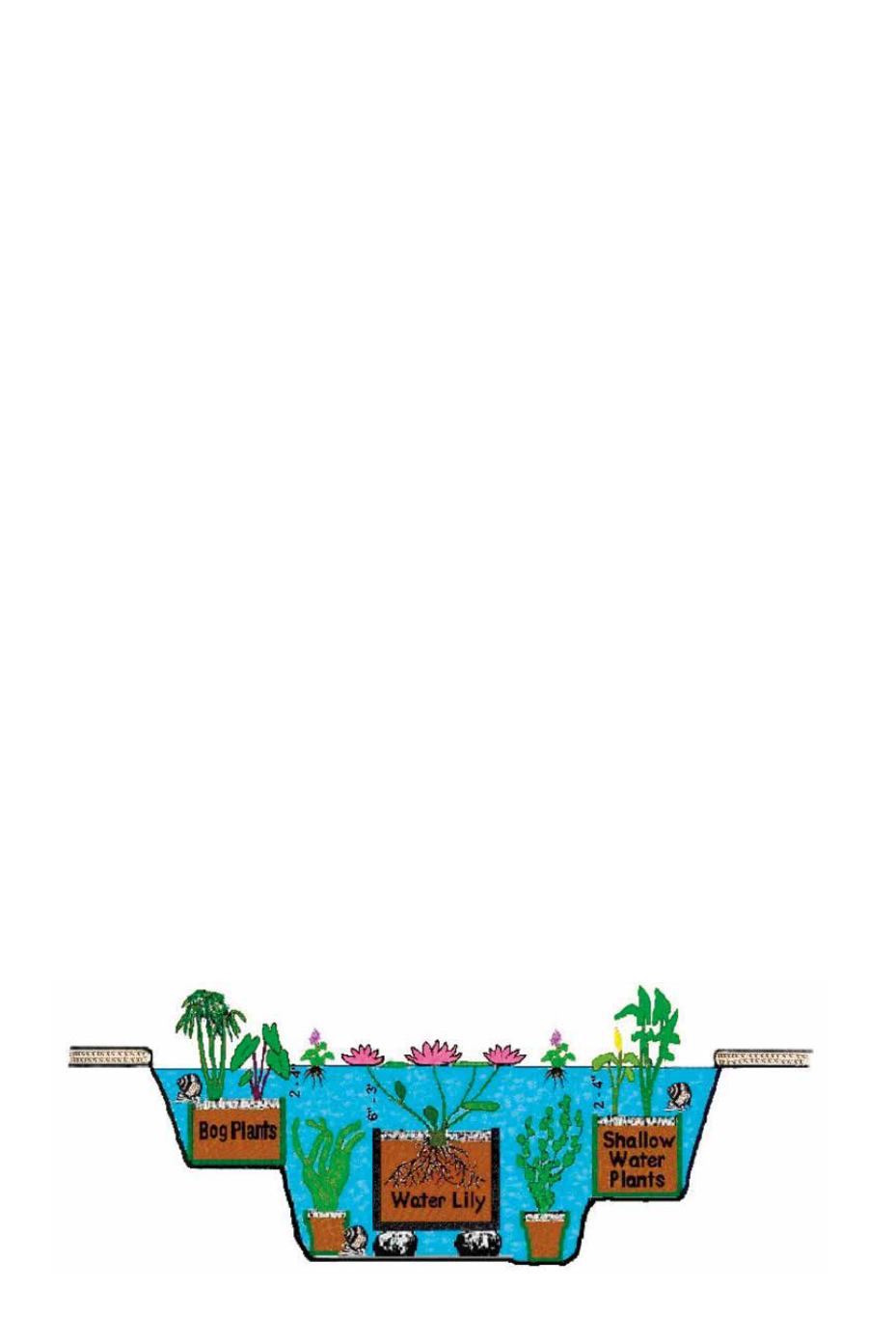
44
2017 Catalogue
Phone: 519-782-4052
Do Not Add Algaecides.
This will create artificially clear water, which may become green again as chemicals
lose their effectiveness. Most important, any chemical that will kill algae, a simple form of plant life, is likely
to hinder the growth of more desirable aquatics such as lilies and marginal plants. Improper dosage can result
in the loss of all plants and even fish. If coagulants are used to settle suspended algae, filtration is usually
necessary to remove the coagulated plant material before its decomposition can harm fish.
String Algae.
String algae is sometimes a problem in mature, balanced ponds with clear water. A small amount
is beneficial in keeping the water clear and providing natural food for the fish. Excessive amounts can be
removed manually or by gently altering the pond chemistry to create conditions unfavourable to the growth of
string algae. Barley straw and peat pellets are natural products recommended for this purpose (See page 24).
Stubborn, persistent growth may require the repeated application of Pond Balance. Be sure to follow directions
carefully and remove organic debris by filtration or vacuuming.
Be Sure You Have Sufficient Plants for a Balanced Pond.
Oxygenating plants do a great deal to absorb dissolved
nutrients. We recommend 1 bag per 5-6 square feet of exposed surface area. Larger, deeper ponds require less.
Allow for growth.
Add water hyacinths or another lily to provide shade and use up nutrients. Hyacinths are inexpensive and
usually multiply rapidly. Other floating plants such as salvinia and duckweed are also very helpful.
A good supply of snails and/or vacuum will help to remove slime and accumulated debris, thus helping to keep
the water clear. If fish population is large, especially Koi, a biofilter may be needed (See page 28-29). We firmly
believe that an ecologically balanced pond will provide more profuse growth and bloom, thus giving the water
gardener more pleasure and satisfaction for their efforts. “Plant for balance”, be patient and prepare to sit
back and enjoy a summer full of healthy, exotic flowers and lively fish.
Water Lily Problems? Check These Points:
1. The use of chemicals in the pool to control algae is not recommended
2. Planting containers are too small
3. Lilies are not getting enough sunlight (need 6 hours minimum)
4. When planting did not use heavy top soil and/or fertilizer as recommended
5. Many commercially packaged soil mixtures are not suitable for good growth
6. Is there soil or gravel on the crown of the plant?
7. Needs fertilizer - did not fertilize monthly or as directed
8. Root-bound (hardy lilies need dividing every two or three years)
9. Too much or too little water over the crown of the plant
10. Hardy lilies start to go dormant in September
11. Tropical lilies do poorly in cold water and go dormant after heavy frost
12. Use of herbicides or pesticides in your yard or the neighbour's
13. Splashing or turbulence from nearby fountain or waterfall
14. Large Koi or Goldfish may be eating new growth and possibly disturbing the root system
15. Excess of aphids, which may be sprayed off with hose and eaten by fish
Cross Section of a Typical Pond
TROUBLESHOOTING
cont’d


